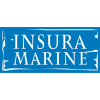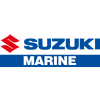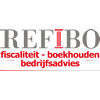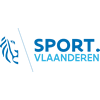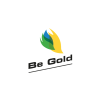De doelstelling, van de meeste spelen is niet alleen ‘fun' maar ook groepsontwikkeling, teambuilding...
Geraadpleegd 15 februari 2014:
SVS teambuilding activiteiten: http://www.schoolsport.be/page.aspx?ID=175
100 maal creatief met taal: http://www.roeland.be/uploads/documenten/7_publicaties/100_creatief/voor...
spelendatabank Chirojeugd Vlaanderen: http://www.chiro.be/spelendatabank
Scoutpedia, de open source kennisbank voor Scouting waar iedereen kan aan meewerken. Een schat aan spelen en tips: http://nl.scoutwiki.org/
KLJ spelendatabank: http://www.klj.be/Default.aspx?tabid=739&language=nl-BE
Sleutelwoorden: spel, teambuilding, groepsontwikkeling
Digitale bibliotheek
TEAMBUILDING ACTIVITEITEN:
TEAMONTWIKKELING, TUCKMAN:
Als model voor de omvorming van een groep tot een team, gebruiken we Tuckman's Team Development Program.
Geraadpleegd 15 februari 2014:
http://salvos.org.au/scribe/sites/2020/files/Resources/Transitions/HANDO...
https://www.velt.be/sites/files/content/documenten/Samentuinen/2014/groepsdynamica.pdf
sleutelwoorden: team, teamontwikkeling, groepsontwikkeling, Tuckman
BIOMECHANICAL ANALYSIS OF SPINE MOVEMENTS IN HIKING ON SAILING: A PRELIMINARY STUDY (2007)
Fábio Sprada de Menezes, Gustavo Ricardo Schütz, Paulo Roberto Cerutti, Letícia Calado Carneiro, Heiliane Brito Fontana, Helio Roesler
Aquatic Biomechanics Research Laboratory, Santa Catarina State University, Florianópolis, Brazil
Abstract:
This study aimed to evaluate sailors' vertebral spine movements and positioning during hiking position. One Laser Class sailor composed the sample. Four 60Hz Peak Motus System® cameras were used. To evaluate some spine angles the following points were chosen: in saggital plane - the neck flexion angle, thoracic kiphosis angle and lumbar lordosis angle; in frontal plane - the lateral inclination angle; in transversal plane - the trunk rotation. Data were analysed through descriptive statistics. The analysis shows great angle variations performed in a 10s hiking execution. It can be observed that the sailor's trunk performs, in the three axes, a sum of movements during the technical gesture. It was demonstrated that hiking is not a static posture and to study this position researchers should not consider trunk as a fixed segment.
Geraadpleegd 8 juni 2012.
Sleutelwoorden: hiking, rug, éénmansboot
Clone of BIOMECHANICAL ANALYSIS OF SPINE MOVEMENTS IN HIKING ON SAILING: A PRELIMINARY STUDY (2007)
Three experienced sailors performed two fundamental body manoeuvres to minimize capsizing during sail boating. Cardio-pulmonary and metabolic responses for each position have been evaluated as well as muscular moments at relevant joints. The strenuous nature of extending the body outboard, without trapeze, requires considerable thigh and abdominal muscle force and endurance. (Sports med. 20, 325-332, 1980.).
Geraadpleegd 11 juni 2012.
http://www.koljavoelkers.de/literatur/articles/Marchetti%20et%20al%20(1980)%20Biomechanics%20of%20two%20fundamental%20sailing%20postures.pdf
sleutelwoorden: trapeze, hiking
GUIDE DE LA POSITION DE RAPPEL EN LASER (2010) Mémoire BEES 2° degré. DAVID FEREY
De nombreuses études ont été produites sur le rappel en Laser, nous nous proposons ici de nous appuyer sur ces différentes études afin de produire un guide pratique pour accompagner les nouveaux entraîneurs de ce support ainsi que les pratiquants non encadrés.
Geraadpleegd 8 juni 2012.
http://www.google.be/search?client=safari&rls=en&q=david+ferey+guide&ie=UTF-8&oe=UTF-8&redir_esc=&ei=3_jVT7_0OI_68QO0pPj5Ag
Sleutelwoorden: Laser, hiking
LE MAINTIEN DE LA POSITION DE RAPPEL EN DÉRIVEUR SOLITAIRE. ASPECTS THÉORIQUES ET PROPOSITIONS MÉTHODOLOGIQUES D’ÉVALUATION DE LA FATIGUE MUSCULAIRE. (2002)
Sustained hiking position in dinghy sailing. Theoretical aspects and methodological considerations for muscle fatigue assessment.
O. Maïsetti a,b,*, A. Guével c, P. Iachkine d, P. Legros e, J. Briswalter f
Résumé:
Objectifs - Faire le point sur les connaissances concernant les sollicitations physiologiques induites par la pratique du dériveur de compétition et notamment lors de l'utilisation de la position de rappel, facteur déterminant de la performance dans les gammes de vent médium à fort. Des propositions d'ordre méthodologique sont avancées pour l'évaluation de la fatigue musculaire associée au maintien de cette posture.
Actualités - Le rappel participe au maintien d'une vitesse d'avancement optimale de l'embarcation. Il consiste à opposer à la force du vent sur le plan de voilure, un couple de force créé par le poids et la taille du régatier. Ce geste sollicite les extenseurs du genou et fléchisseurs de la hanche selon un mode de contraction à dominante isométrique. Les spécialistes de l'activité considèrent que la capacité à maintenir cette position limiterait la performance en dériveur. Les niveaux modérés de consommation d'oxygène semblent conforter l'existence d'un facteur limitant d'origine musculaire.
Perspectives et projets - La mise en œuvre d'une méthodologie d'évaluation des sollicitations musculaires et de la fatigue associée au maintien de la position de rappel doit être envisagée afin de permettre le suivi des capacités musculaires relatives à ce geste technique. © 2002 Editions scientifiques et médicales Elsevier SAS. Tous droits réservés.
Abstract
Objectives - Provide information on physiological demands related to dinghy sailing with special regards to hiking, which is considered as a performance factor in medium and strong winds. An additional purpose is to give methodological considerations for localized muscle fatigue assessment related to muscles involved in hiking movement.
Topics - Hiking contributes to maintain the boat speed during the race. It uses the force moment of the sailor's weight and height to balance the heeling moment of wind forces on the sail. This posture engages knee extensors and hip flexors muscles which produce essentially-isometric contractions.
The ability to hike over extended periods of time is considered as an important component of sailing performance. Indeed, since the oxygen cost of sailing is relatively light, muscular factors and fatigue-induced may be one of the main determinants of competitive dinghy sailing performance.
Future prospects - Specific method for the assessment of localized muscle fatigue during hiking movement remain to be determined for the follow-up of muscles' capabilities involved in this sailing technique.
© 2002 Editions scientifiques et médicales Elsevier SAS. All rights reserved.
Geraadpleegd 8 juni 2012.
Science et Sport 17 (2002) 234-246
http://www.rspdl.com/web/fichiers/pdf/Maisetti_2002_voile.pdf
Sleutelwoorden: hiking
QUADRICEPS OXYGENATIE BIJ JONGE ZEILERS TIJDENS INTERMITTENTE STATISCHE CONTRACTIE. (2010)
Ugent, Opleiding Lich. Opvoeding en Bewegingswetenschappen.
Masterproef voorgelegd tot het behalen van de graad Master in de Lichamelijke Opvoeding en Bewegingswetenschappen
Compernolle Sofie en Neyens Annabel Promotor: Prof. Dr. Bourgois Jan Co-promotor: Dr. Boone Jan.
Abstract:
(...) Het doel van deze studie was enerzijds om het fysiologische profiel en de prestatiebepalende factoren bij optimistzeilers te bepalen, anderzijds nagaan of de beperkte spierdoorbloeding aan de basis lag van de optredende spiervermoeidheid tijdens zeilen. (...)
Geraadpleegd 8 juni 2012.
http://lib.ugent.be/fulltxt/RUG01/001/459/060/RUG01-001459060_2011_0001_AC.pdf
sleutelwoorden: hiking, quadriceps, optimist
QUALITY OF DINGHY HIKING: EFFECTS ON SPEED AND HEADING
R.N. Marshall Eastern Institute of Technology, Taradale, Hawke's Bay, New Zealand
Dinghy hiking uses the sailor's bodyweight to produce a 'righting moment' which counteracts the moment of force caused by the wind on the sail. However, hiking is a physically demanding activity and maintaining quality hiking technique throughout a race is essential in competitive sailing. A land-based hiking simulator has been used to assess hiking technique, but no data were available to relate simulator results to on-water performance. This project evaluated the effect of decreased quality hiking positions on actual on-water dinghy speed and heading.
Geraadpleegd 8 juni 2012
http://w4.ub.uni-konstanz.de/cpa/article/viewFile/3387/3187
Sleutelwoorden: hiking, snelheid
YACHT TYPE AND CREW-SPECIFIC DIFFERENCES IN ANTHROPOMETRIC, AEROBIC CAPACITY, AND MUSCLE STRENGTH PARAMETERS AMONG INTERNATIONAL OLYMPIC CLASS SAILORS. (2007) BOJSEN-MØLLER J, LARSSON B, MAGNUSSON SP, AAGAARD P.
Team Danmark Test Centre, Bispebjerg Hospital, Copenhagen, Denmark. jbm01@bbh.hosp.dk
Abstract
Physical fitness and muscular strength are important performance factors for Olympic class sailors, but the physical demands vary greatly between yacht classes, and limited information is available regarding the physical demands for the different crew positions. In the present paper, strength and aerobic capacity data from elite Olympic sailors are presented and compared with previous findings. Furthermore, a system for classification of Olympic class sailors is suggested. (...)
Geraadpleegd 11 juni 2012.
http://www.tandfonline.com/doi/pdf/10.1080/02640410701287115
Sleutelwoorden: trapeze, hiking, olympisch zeilen
SAILING AND SPORTS MEDICINE: A LITERATURE REVIEW (2006)
J B Allen (SailSportMed Inc, Wilmington, NC 28403, USA), M R De Jong (Southern Illinois Sports Medicine, Bellesville, IL, USA)
Correspondence to:
Dr Allen
SailSportMed Inc, Wilmington, NC 28403, USA; aasail@aol.com
Abstract
Sailing medicine has been mainly addressed by healthcare professionals who happen to sail. Although there has been an increase in the number of studies of various aspects of sailing over the last 15 years, efforts to advance evidence based knowledge of sailing and sports medicine face unique obstacles. Recent interest in research by groups such as Olympic and America's Cup teams has produced beneficial changes.
CORRELATION BETWEEN HEART RATE AND PERFORMANCE DURING OLYMPIC WINDSURFING COMPETITION. (2003)
Chamari K, Moussa-Chamari I, Galy O, Chaouachi M, Koubaa D, Hassen CB, Hue O.
National Centre of Sports Medicine, El Menzah, Tunisia.
Eur J Appl Physiol. 2003 May;89(3-4):387-92. Epub 2003 Apr 1.
Abstract
The aim of this study was to examine the heart rate (HR) response to Olympic windsurfing competition and to check if there was any correlation between racing HR, performance, and the variables measured during laboratory maximal exercise.
Ten elite windsurfers [age: 20.93 (3.46) years; height: 178.10 (6.34) cm; body mass: 66.79 (5.90) kg] performed a laboratory maximal oxygen consumption (.VO(2max)) trial and national windsurf competitions wearing a HR monitor.
One hundred and forty-three individual races were examined. Racing HR was expressed as a percentage of (1) HR(max) (maximal treadmill HR) and (2) HR(reserve) (HR(max)-HR(rest)). The performance (racing classification: RC, which is inversely proportional to performance) was significantly correlated to the racing HR response in both light wind (LW): LW-RC=-0.12(%HR(reserve))+13.03; r=-0.71, r(2)=0.50, p<0.001, and medium wind (MW): MW-RC=-0.11(%HR(reserve))+10.99; r=-0.66, r(2)=0.43, p<0.001.
The results showed similar correlations between performance and %HR(max). Post racing lactate concentration was higher in LW compared to MW [7.14 (0.21) and 5.18 (2.02) mmol.l(-1), respectively]. There was a negative correlation between the highest racing HR (%HR(reserve)) of each athlete and the second ventilatory threshold expressed as a percentage of.VO(2max) (r=-0.71, p<0.05).
To summarize, this study showed that light and medium wind Olympic windsurfing performances are highly dependent on the capacity of the athlete to maintain a high HR for long periods of time. Furthermore, windsurfing is highly dependent on the athlete's physical fitness level as shown by the correlations between racing HRs and laboratory physiological variables.
Geraadpleegd: 22 december 2012
http://www.ncbi.nlm.nih.gov/pubmed/12682836
sleutelwoorden: windsurfen, VO2 max, lactaattest, correlatie hartritme-uitslag, fitness
ASSESSMENT OF ENERGY DEMAND IN LASER SAILING: INFLUENCES OF EXERCISE DURATION AND PERFORMANCE LEVEL.(2007)
Eur J Appl Physiol. 2007 Jan;99(2):95-101. Epub 2006 Dec 5
IMNSSA, BP 610, 83800, Toulon Armées, France. olivier.castagna@wanadoo.fr
Abstract
In this study we analyzed the influence of both exercise duration and skill level on energy demand in Laser sailing. Twenty-three subjects volunteered for this study. The population is divided into two groups according to their skill level: 13 high (HS) and 10 low (LS). Every subject performed a 30 min upwind sailing test, with a tacking every 2 min. Heart rate (HR), gas exchange and respiratory parameters were analyzed throughout the trial, and measured blood lactate concentration ([La(bl)] at rest and immediately after the exercise completion. Three, 4 min intervals were selected for analysis: 6-10 min (T10), 16-20 min (T20) and 26-30 min (T30). In contrast to previous studies, we found significantly progressive aerobic energy metabolism with sailing duration in the HS group (T10 = 45%; T20 = 61%; T30 = 68% VO2max, P < 0.05), whereas this demand remained stable, and significantly lower in LS group (T10 = 45%; T20 = 52%; T30 = 51% VO2max, P < 0.05). This study shows that aerobic demand is significantly more important in LS than in HS subjects after 30 min regatta, and could be an important factor in Laser regatta performance. We need further studies to confirm and explain this difference.
PMID: 17146694 [PubMed - indexed for MEDLINE]
Geraadpleegd 12 december 2012.
http://www.ncbi.nlm.nih.gov/pubmed/17146694
sleutelwoorden: Laser, aëroob uithoudingsvermogen.
GUIDE DE LA POSITION DE RAPPEL EN LASER (2010) Mémoire BEES 2° degré. DAVID FEREY
De nombreuses études ont été produites sur le rappel en Laser, nous nous proposons ici de nous appuyer sur ces différentes études afin de produire un guide pratique pour accompagner les nouveaux entraîneurs de ce support ainsi que les pratiquants non encadrés.
Geraadpleegd 8 juni 2012.
http://www.google.be/search?client=safari&rls=en&q=david+ferey+guide&ie=UTF-8&oe=UTF-8&redir_esc=&ei=3_jVT7_0OI_68QO0pPj5Ag
Sleutelwoorden: Laser, hiking
TALENT HERKENNING IN HET BEWEGINGSONDERWIJS: WAT ZEGGEN GEBOORTEMAAND EN RIJPING BIJ HET VASTSTELLEN VAN EEN POTENTIEEL SPORTTALENT IN DE LES SPORT EN BEWEGEN? AEMY VISSER & MAYKE LIGTHART, Academie Lichamelijke Opvoeding, Nijmegen, 2010
(...) The objective of this study is to discover whether there's a relation between birth month, physical maturity and potential in sports talents, among youth in secondary education. Measuring the physical maturity of the participants can be uses to answer the question whether a child has early, average or late maturity for his biological age.
The birth month of the child is also recorded. Will these two factors have an influence on the identification of potential sports talents in the P.E. program?
Geraadpleegd 7 juni 2012.
http://www.surfsharekit.nl:8080/get/smpid:9795/DS1/
sleutelwoorden: talent, leeftijd, sporttalent
FITNESS MEANS FLEXIBILITY (2011)
Your body is an extension of your boat, so maintain it just as you would your hardware and sails. "Technique" from our Sailing World March 2011 issue.
By Dr. Robert S. Bray Jr.
For many, sailing conjures up images of a relaxed sunny afternoon sipping a cocktail while bobbing about on a comfy boat. Racers know a much different picture. High-performance sailing takes place in one of the most physically demanding and challenging environments of any sport. The weather can be punishing, and the challenge is often compounded by fatigue, dehydration, and caloric deprivation on top of muscle exhaustion. Injuries are going to happen, but many are avoidable.
The rougher the seas and the lighter the boat, the more unstable the platform on which a sailor must work. The human body responds to this with a complex set of coordinated responses between the vestibular labyrinth of the inner ear and the core trunk muscles. Proper balance on the boat requires both flexibility and a strong muscle core.
Flexibility does not come easy with age. Too many times I have heard, "Now that I can afford the boat, I'm too stiff to sail it."
Geraadpleegd 12 december 2012
http://www.sailingworld.com/experts/fitness-means-flexibility
Sleutelwoorden: lenigheid, stretching (pre race), fitness
BODY MASS CHANGES AND NUTRIENT INTAKE OF OPTIMIST CLASS
Journal of Sports Sciences, Volume 25, Issue 10, 2007, Special Issue: Sailing Physiology
Benedict Tana* & Fahma Sunarjab
Abstract (volledig artikel niet gratis)
Young sailors tend to compete under a similar racing format to that of adults, spending extended hours exposed to the elements. This descriptive study measured the body mass changes in 65 male Optimist dinghy sailors (mean age 11.6 years, s = 1.4; body mass 37.2 kg, s = 8.2) and describes their fluid and carbohydrate intake during a typical race day.
The sailors were weighed before launching and upon return to shore, and were interviewed to assess their fluid and carbohydrate intakes. After spending 6 h afloat, the participants displayed a mean weight loss of 0.5 kg (s = 0.6), indicating dehydration of 1.3% (s = 1.2, range -0.9 to 6.2%) assuming euhydration before they went afloat. Water loss amounted to 1.3 litres (s = 0.8) or 0.2 litres · h-1 (s = 0.1). Thirty-nine boys (60%) incurred <1% dehydration, 13 (20%) incurred 1 - 2% dehydration, and 13 (20%) incurred >2% dehydration.
While afloat, the participants drank 816 ml (s = 621) of fluid, replacing only 61% of their water loss: 3% drank nothing, 78% drank plain water, and 15% drank sports drinks.
Pre-race carbohydrate consumption was 1.7 g · kg-1 (s = 1.4, range 0.0 - 7.6 g · kg-1), with consumption when afloat of 7.1 g · h-1 (s = 6.9). In view of the hypohydration demonstrated, it is recommended that specific strategies be developed to improve the dietary practices of young sailors.
Geraadpleegd: 22 december 2012
http://www.tandfonline.com/doi/full/10.1080/02640410701287156
sleutelwoorden: optimist, lichaamsgewicht, waterhuishouding, sportdrank, sportvoeding
ENDING THE MYTHS ABOUT LACTIC ACID (2012)
Australian Sailing & Yachting - October 2012
Let's face it lactic acid has a bad rap! Amongst the many accepted (negative) beliefs relating to it are these:
- Causes pain during exercise.
- Limits your performance causing you to stop or slow down or have a break.
- It is a "waste" product and serves no purpose. It gives you sore muscles the next day after exercising.
- Makes you feel like throwing up or actually doing it.
For a long time (since the 1920's in fact) lactic acid was widely believed to be responsible for having these effects. The accepted theory in sports and exercise science was it was a waste product produced by the muscles due to hard exercise. This acid caused the muscles to stop working effectively and had numerous negative side effects, some described above.
Research in the last 10-15 years has slowly been busting many of these myths and changing long-held misconceptions about what it actually is, its role and its impacts.
Let's look at the main four myths out there:
Geraadpleegd
http://www.mysailing.com.au/news/ending-the-myths-about-lactic-acid
Sleutelwoorden: melkzuur, krampen, weerstand, VO2 max
BEKIJK DE MEDAILLE OOGSTEN VAN LONDON VANUIT EEN AANTAL ANDERE OOGPUNTEN: BRUTTO NATIONAAL PRODUKT, VERWACHTINGEN. (2012)
Een analyse van de Business rubriek van de Franse krant 'Le Figaro'
Lees ook het artikel!
Geraadpleegd 22 december 2012.
sleutelwoorden: Olympische Spelen, medaillekansen
JO: LES PAYS LES PLUS RICHES REMPORTENT PLUS DE MÉDAILLES
Olvia Derreumaux
Op basis van een onderzoek: hebben de rijkste landen meer kansen op medailles dan armere landen.
Geraadpleegd 22 december 2012
http://www.lefigaro.fr/sport-business/2012/06/27/20006-20120627ARTFIG00541-jo-les-pays-les-plus-riches-remportent-plus-de-medailles.php
Zie ook de studie:
Modelling Olympic performance
Estimation des médailles décernées aux JO de Londres, en fonction de critères macro-économiques
http://www.pwc.fr/modelling-olympic-performance.html (22/12/2012)
sleutelwoorden: olympische spelen, medaillekansen
INJURIES IN SAILBOARD ENTHUSIASTS. (1988)
Department of Pediatrics, University of Texas Medical Branch, Galveston.
British Journal Sports Med. 1988 September; 22(3): 95-97.
PMCID: PMC1478580
Abstract
This study was carried out to determine the rate and types of injuries experienced by board sailors. Results derive from: (a) a review of hospital medical records for water sports injuries, and (b) a questionnaire-interview of 73 athletes windsurfing on waters in the Galveston area during a hurricane and in moderate and light wind conditions. Windsurfers reported 0.22 injuries per 1,000 participant hours. Seventy-six per cent of athletes reported injuries while boardsailing, but only 15 per cent reported significant injuries. The most common reported injuries included lacerations, jellyfish stings, abrasions, muscle strain, sunburn, contusions, and blisters. A small number of athletes reported ligament sprain, ear infection, knee injury, eye injury, and splinters. The large majority of injuries reported are preventable by wearing protective gear, applying sunscreen, avoiding overpowering winds, and selecting safe sailing areas. Four per cent of water-sport injuries requiring hospitalization resulted when epileptic water-sports participants had a seizure in or near the water.
Full text
Full text is available as a scanned copy of the original print version. Get a printable copy (PDF file) of the complete article(537K), or click on a page image below to browse page by page. Links to PubMed are also available for Selected References.
Geraadpleegd 16 december 2012
http://www.ncbi.nlm.nih.gov/pmc/articles/PMC1478580/
Sleutelwoorden: windsurfen, medische aspecten in de zeilsport
MEDISCHE ASPECTEN VAN HET CATAMARANZEILEN OP HOOG NIVEAU
Zeilers worden voortdurend blootgesteld aanwind en (koud, zout) water en dragen om zich te beschermen, wetsuits, droogpakken, schoentjes (boots), handschoenen en mutsen. In die pakken wordt wat afgezweet (dehydratatie), de irritatie (rash), aan nek en polsen is niet denkbeeldig. De ‘botjes' zijn niet bepaald ademend en de voeten zijn constant vochtig.
Een zeilwedstrijd duurt makkelijk 5 à 6 uur, op het water.
Reken daarbij dat zeilen een life-time sport is, dat zeilers dikwijls ook andere watersporten ‘plegen' die ook een dry of wetsuit vereisen (kite, windsurf, golfsurfen, triatlon, open water zwemmen...). Een goede, liefst preventieve, huidverzorging is duidelijk essentieel.
Op internet zijn er artikels te vinden over zeil-kwetsuren. Specifiek over catamaran gaan ze niet, maar ze geven wel een indicatie van de mogelijke aard van de kwetsuren, hoe ze eventueel te vermijden.
Beginnen met een uitvoerig en goed leesbaar literatuur overzicht.
SAILING AND SPORTS MEDICINE: A LITERATURE REVIEW (2006)
J B Allen and M R De Jong
Br J Sports Med. 2006 July; 40(7): 587-593.
Published online 2006 March 17.
Abstract
Sailing medicine has been mainly addressed by healthcare professionals who happen to sail. Although there has been an increase in the number of studies of various aspects of sailing over the last 15 years, efforts to advance evidence based knowledge of sailing and sports medicine face unique obstacles. Recent interest in research by groups such as Olympic and America's Cup teams has produced beneficial changes.
Geraadpleegd 19 september 2012
http://www.ncbi.nlm.nih.gov/pmc/articles/PMC2653898/
Met de combinatie zon-wind wordt al te dikwijls weinig rekening gehouden, en nochthans:
SKIN CANCER - THE REALITY OF BEING A FAIR-SKINNED SAILOR (2009)
Dr. Steve Horwitz
'One of the first skin cancer screenings that I did at a regatta was during the 2001/02 Miami stopover for the Volvo Ocean Race,' said Dr. Steve Horwitz.
Steve is sailing's skin doctor. He has been practicing dermatology in Miami for over three decades and has been sailing on Biscayne Bay for longer.
'What surprised me was that only one of the crop of Volvo sailors that I screened had a precancerous growth on his lip,' reflected Dr. Horwitz. 'As it turns out, most of them were Australian or Kiwis. There is such a high incidence of skin cancer down under that there is a huge amount of public information and awareness. Everyone wears rashers, protective clothing and sunscreen.'
(...) The basics - There is a direct correlation between the incidence of sunburn during childhood and the development of melanoma. (A reminder, cataracts are also the result of sunlight exposure). A majority of one's total lifetime exposure to the sun comes during the first 18 years of life. All of you, who are in my age group and have kids in junior programs, take note for your kids and for yourselves. (...)
This excellent article provided courtesy of www.worldregattas.com
Geraadpleegd op 19 september 2012.
http://www.sail-world.com/Europe/index.cfm?SEID=0&Nid=56050&SRCID=0&ntid=0&tickeruid=0&tickerCID=0
STUDY IDENTIFIES SAILING INJURIES (2011).
With the America's Cup destination decided, a study identifying sailing injuries is timely;
Just as the site for the 2013 America's Cup has been announced, a study from Rhode Island Hospital highlights that the sport isn't always smooth sailing. The study was published recently in the journal Wilderness and Environmental Medicine.
(...)Also of concern in the results of the survey is that 16 percent of the sailors reported having suffered sunburn while sailing in the year prior. Nathanson says, "Sunscreen utilization was low, particularly in sailors less than 30 years old. Focused educational interventions should be developed aimed at sailors, particularly those in the younger age group, in order to reduce the risk of skin cancer. Participants in water sports have been shown to be at increased risk of skin cancer because of their prolonged exposure to solar radiation."(...)
Geraadpleegd 19 september 2012.
http://www.news-medical.net/news/20110105/Study-identifies-sailing-injuries.aspx
In het vooruitzicht of Rio....
INCIDENCE OF INJURIES IN BRAZILIAN SAILORS OF DIFFERENT TECHNICAL LEVELS. (2009)
RUSCHEL, Caroline et al.
Rev Bras Med Esporte [online]. 2009, vol.15, n.4, pp. 268-271. ISSN 1517-8692. http://dx.doi.org/10.1590/S1517-86922009000500007.
Abstract
The first step to reduce the incidence of injuries in athletes is to assess the characteristics of occurrence, providing background for the structure and application of prevention programs. This study had the aim to investigate the incidence of injuries in sailing athletes of different technical levels.
The sample was composed of 172 sailors, divided in three groups: 89 beginners, participants in the Optimist qualifying of the World Championship (group 1); 29 juvenile sailors, participants in the Youth Sailing Cup (group 2) and 54 national elite sailors, participants in the Pre-Olympic Sailing Week (group 3). The data collection instrument was a mixed questionnaire and the data were analyzed by descriptive statistics. Five athletes from group 1 (5.6%); five athletes from group 2 (17.2%) and 15 athletes from group 3 (27.8%) reported some kind of injury related with the modality.
Higher incidence of injury was observed in the back and knee and the most reported diagnostic was muscular injury, followed by cuts, sprains and tendinitis. The incidence in sailing is low if compared with other sport modalities, despite the high physical demand required during the actions on the boat. It was verified that the professional athletes, who had higher age mean and time of practice, suffered the most injuries. On the other hand, the lowest incidence was among children and adolescents.
Therefore, it is important that prevention programs start from the first years of practice in order to reduce the risk to future outbreaks, especially of chronic nature. Based on this information concerning kinds of injury, we suggest inclusion of exercises specific to musculature conditioning and compensation in the training programs, as well as stretching and relaxation sessions.
Revista Brasileira de Medicina do Esporte
Print version ISSN 1517-8692
Geraadpleegd 19 september 2012.
http://www.scielo.br/scielo.php?pid=S1517-86922009000500007&script=sci_abstract
MEDISCHE ASPECTEN VAN HET ZEILEN OP HOOG NIVEAU
Zeilers worden voortdurend blootgesteld aanwind en (koud, zout) water en dragen om zich te beschermen, wetsuits, droogpakken, schoentjes (boots), handschoenen en mutsen. In die pakken wordt wat afgezweet (dehydratatie), de irritatie (rash), aan nek en polsen is niet denkbeeldig. De ‘botjes' zijn niet bepaald ademend en de voeten zijn constant vochtig.
Een zeilwedstrijd duurt makkelijk 5 à 6 uur, op het water.
Reken daarbij dat zeilen een life-time sport is, dat zeilers dikwijls ook andere watersporten ‘plegen' die ook een dry of wetsuit vereisen (kite, windsurf, golfsurfen, triatlon, open water zwemmen...). Een goede, liefst preventieve, huidverzorging is duidelijk essentieel.
Op internet zijn er artikels te vinden over zeil-kwetsuren. Specifiek over catamaran gaan ze niet, maar ze geven wel een indicatie van de mogelijke aard van de kwetsuren, hoe ze eventueel te vermijden.
Beginnen met een uitvoerig en goed leesbaar literatuur overzicht.
SAILING AND SPORTS MEDICINE: A LITERATURE REVIEW (2006)
J B Allen and M R De Jong
Br J Sports Med. 2006 July; 40(7): 587-593.
Published online 2006 March 17.
Abstract
Sailing medicine has been mainly addressed by healthcare professionals who happen to sail. Although there has been an increase in the number of studies of various aspects of sailing over the last 15 years, efforts to advance evidence based knowledge of sailing and sports medicine face unique obstacles. Recent interest in research by groups such as Olympic and America's Cup teams has produced beneficial changes.
Geraadpleegd 19 september 2012
http://www.ncbi.nlm.nih.gov/pmc/articles/PMC2653898/
Met de combinatie zon-wind wordt al te dikwijls weinig rekening gehouden, en nochthans:
SKIN CANCER - THE REALITY OF BEING A FAIR-SKINNED SAILOR (2009)
Dr. Steve Horwitz
'One of the first skin cancer screenings that I did at a regatta was during the 2001/02 Miami stopover for the Volvo Ocean Race,' said Dr. Steve Horwitz.
Steve is sailing's skin doctor. He has been practicing dermatology in Miami for over three decades and has been sailing on Biscayne Bay for longer.
'What surprised me was that only one of the crop of Volvo sailors that I screened had a precancerous growth on his lip,' reflected Dr. Horwitz. 'As it turns out, most of them were Australian or Kiwis. There is such a high incidence of skin cancer down under that there is a huge amount of public information and awareness. Everyone wears rashers, protective clothing and sunscreen.'
(...) The basics - There is a direct correlation between the incidence of sunburn during childhood and the development of melanoma. (A reminder, cataracts are also the result of sunlight exposure). A majority of one's total lifetime exposure to the sun comes during the first 18 years of life. All of you, who are in my age group and have kids in junior programs, take note for your kids and for yourselves. (...)
This excellent article provided courtesy of www.worldregattas.com
Geraadpleegd op 19 september 2012.
http://www.sail-world.com/Europe/index.cfm?SEID=0&Nid=56050&SRCID=0&ntid=0&tickeruid=0&tickerCID=0
STUDY IDENTIFIES SAILING INJURIES (2011).
With the America's Cup destination decided, a study identifying sailing injuries is timely;
Just as the site for the 2013 America's Cup has been announced, a study from Rhode Island Hospital highlights that the sport isn't always smooth sailing. The study was published recently in the journal Wilderness and Environmental Medicine.
(...)Also of concern in the results of the survey is that 16 percent of the sailors reported having suffered sunburn while sailing in the year prior. Nathanson says, "Sunscreen utilization was low, particularly in sailors less than 30 years old. Focused educational interventions should be developed aimed at sailors, particularly those in the younger age group, in order to reduce the risk of skin cancer. Participants in water sports have been shown to be at increased risk of skin cancer because of their prolonged exposure to solar radiation."(...)
Geraadpleegd 19 september 2012.
http://www.news-medical.net/news/20110105/Study-identifies-sailing-injuries.aspx
In het vooruitzicht of Rio....
INCIDENCE OF INJURIES IN BRAZILIAN SAILORS OF DIFFERENT TECHNICAL LEVELS. (2009)
RUSCHEL, Caroline et al.
Rev Bras Med Esporte [online]. 2009, vol.15, n.4, pp. 268-271. ISSN 1517-8692. http://dx.doi.org/10.1590/S1517-86922009000500007.
Abstract
The first step to reduce the incidence of injuries in athletes is to assess the characteristics of occurrence, providing background for the structure and application of prevention programs. This study had the aim to investigate the incidence of injuries in sailing athletes of different technical levels.
The sample was composed of 172 sailors, divided in three groups: 89 beginners, participants in the Optimist qualifying of the World Championship (group 1); 29 juvenile sailors, participants in the Youth Sailing Cup (group 2) and 54 national elite sailors, participants in the Pre-Olympic Sailing Week (group 3). The data collection instrument was a mixed questionnaire and the data were analyzed by descriptive statistics. Five athletes from group 1 (5.6%); five athletes from group 2 (17.2%) and 15 athletes from group 3 (27.8%) reported some kind of injury related with the modality.
Higher incidence of injury was observed in the back and knee and the most reported diagnostic was muscular injury, followed by cuts, sprains and tendinitis. The incidence in sailing is low if compared with other sport modalities, despite the high physical demand required during the actions on the boat. It was verified that the professional athletes, who had higher age mean and time of practice, suffered the most injuries. On the other hand, the lowest incidence was among children and adolescents.
Therefore, it is important that prevention programs start from the first years of practice in order to reduce the risk to future outbreaks, especially of chronic nature. Based on this information concerning kinds of injury, we suggest inclusion of exercises specific to musculature conditioning and compensation in the training programs, as well as stretching and relaxation sessions.
Revista Brasileira de Medicina do Esporte
Print version ISSN 1517-8692
Geraadpleegd 19 september 2012.
http://www.scielo.br/scielo.php?pid=S1517-86922009000500007&script=sci_abstract
SAILING AND SPORTS MEDICINE: A LITERATURE REVIEW (2006)
British Journal of Sports Medecine 2006;40:587-593
doi:10.1136/bjsm.2002.001669
J B Allen1, M R De Jong2
SailSportMed Inc, Wilmington, NC 28403, USA
Southern Illinois Sports Medicine, Bellesville, IL, USA
Correspondence to: Dr Allen SailSportMed Inc, Wilmington, NC 28403, USA; aasail@aol.com
Abstract
Sailing medicine has been mainly addressed by healthcare professionals who happen to sail. Although there has been an increase in the number of studies of various aspects of sailing over the last 15 years, efforts to advance evidence based knowledge of sailing and sports medicine face unique obstacles. Recent interest in research by groups such as Olympic and America's Cup teams has produced beneficial changes.
Geraadpleegd: 16 december 2012
http://www.ncbi.nlm.nih.gov/pubmed/16547146
Sleutelwoorden: medische aspecten in de zeilsport
SAILING INJURY AND ILLNESS: RESULTS OF AN ONLINE SURVEY.(2010)
Wilderness Environ Med. 2010 Dec;21(4):291-7. doi: 10.1016/j.wem.2010.06.006. Epub 2010 Jun 11.
Nathanson AT, Baird J, Mello M.
Department of Emergency Medicine, Alpert Medical School of Brown University, Rhode Island Hospital, 593 Eddy St., Providence, RI 02903, USA. Anathanson@lifespan.org
Abstract
OBJECTIVE:
The purpose of this study was to describe the relative frequency, patterns, and mechanisms of sailing-related injuries in dinghies and keelboats. Data were also collected on risky and risk-averse behaviours of sailors, as well as on sailing-related illnesses.
METHODS:
A web-based, logic-driven, multiple-choice survey was developed and links were posted on sailing-related websites. Data were collected from March through November 2006 on any injuries or illnesses sailors sustained over the prior 12 months.
RESULTS:
From 1188 respondents, a total of 1715 injuries and 559 illnesses were reported. The top 3 injuries for keelboats were leg contusions (11%), hand lacerations (8%), and arm contusions (6%), and in dinghies they were leg contusions (13%), knee contusions (6%), and leg lacerations (6%). The most common mechanisms of injury were "trip/fall," "hit by object," and "caught in lines." Tacking, heavy weather, and jibing were the most common factors contributing to injury. The rates of injury and severe injury in this internet-based survey were 4.6 and 0.57 per 1000 days of sailing, respectively. Of the 70 severe injuries, 25% were fractures, 16% were torn tendons or cartilage, 14% were concussions, and 8% were dislocations. The median rate of lifejacket use was 30%, and median rate of sunscreen use was 80%. Sixteen percent of sailors reported sunburn over the prior 12 months. Seven percent of sailors reported use of alcohol within the 2 hours preceding injury.
CONCLUSIONS:
The most common injuries in both keel boats and dinghies are soft-tissue injuries to the extremities. Severe injuries and illnesses in sailing are uncommon in this study population.
Copyright © 2010 Wilderness Medical Society. Published by Elsevier Inc. All rights reserved.
Geraadpleegs: 16 december 2012
http://www.ncbi.nlm.nih.gov/pubmed/21168780
Sleutelwoorden: medische aspecten in de zeilsport
THE EPIDEMIOLOGY AND AETIOLOGY OF INJURIES IN SAILING (2009)
Sports Medicine: 1 February 2009 - Volume 39 - Issue 2 - pp 129-145
doi: 10.2165/00007256-200939020-00003
Neville, Vernon; Folland, Jonathan P.
Abstract
Sailors are at risk of injury and an understanding of the risks and causes of injury are important in helping to reduce their frequency and severity.
Injuries are specific to the class of sailing. In elite Olympic-class sailing the incidence of injury is ∼0.2 injuries/athlete/year, with the lumbar and thoracic spine and the knee most commonly injured. Poor hiking technique and inadequate leg strength are thought to predispose the knee to injury. Injuries in novice and recreational sailing are predominantly acute in nature with contusions and abrasions typically occurring as a result of collisions with the boom or other equipment during manoeuvres. The only report of injuries in Paralympic-class sailing found a high rate of ∼100 injuries/1000 days of sailing, likely due to severe sailing conditions. The majority of injuries were chronic in nature, predominantly sprains and strains of the upper extremity. The risk of windsurfing injury ranged from 1.1 to 2.0 injuries/person/year, with the majority of injuries being acute, typically due to impact with equipment. (...)
Geraadpleegd: 16 december 2012
http://adisonline.com/sportsmedicine/Abstract/2009/39020/The_Epidemiology_and_Aetiology_of_Injuries_in.3.aspx
Sleutelwoorden: medische aspecten in de zeilsport.


